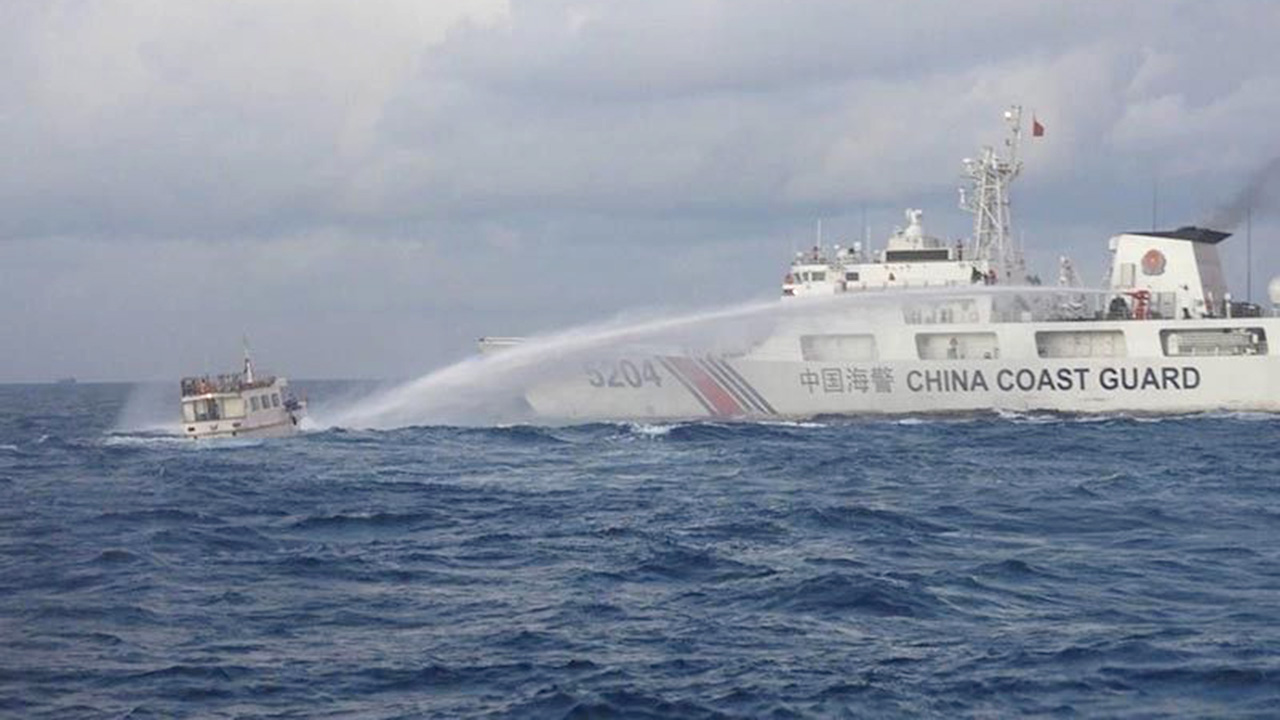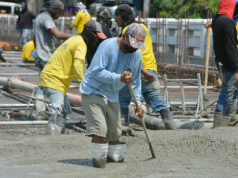Chinese research vessel spotted near Batanes, says Philippine Coast Guard

By Kenneth Christiane L. Basilio and Chloe Mari A. Hufana, Reporters
THE PHILIPPINE Coast Guard (PCG) has reported the presence of a Chinese research vessel operating within the country’s exclusive economic zone (EEZ), sighted during a routine aerial patrol on Saturday near the Babuyan Islands in northern Luzon.
The Chinese ship Xiang Yang Hong 05 was detected about 14.9 nautical miles (27 kilometers) off the coast of the islands in Batanes province, it said in a statement. The vessel did not respond to radio calls from Philippine authorities and was last tracked 86 nautical miles (159 kilometers) off Calayan Island in Cagayan province on Sunday.
The PCG said this was not the first time the vessel had entered Philippine waters. It was observed within the country’s EEZ on June 7 and again on July 31.
“Based on its historical track, the Xiang Yang Hong 05 conducted substantial marine scientific research for almost 22 days after departing the Philippine EEZ and before re-entering,” the PCG said.
The recurring presence of Chinese research vessels in Philippine waters has raised concerns among maritime authorities, particularly over the potential military use of scientific data gathered during unauthorized surveys.
The Xiang Yang Hong 05 is part of a newer class of Chinese research vessels, reportedly converted from a cargo ship. Its design and activities have drawn scrutiny from regional maritime observers, especially due to operations in areas considered sensitive.
The PCG also noted that the broader Xiang Yang Hong vessel series has been linked to research activities associated with China’s military, including past projects tied to the People’s Liberation Army Navy, such as ballistic missile development trials in the 1970s and 1980s.
China asserts sweeping claims over nearly the entire South China Sea through its so-called nine-dash line — a demarcation that overlaps with the EEZs of several Southeast Asian nations, including the Philippines, Vietnam and Malaysia. These claims have been widely challenged under international law, including by a 2016 ruling from the Permanent Court of Arbitration in favor of the Philippines.
The presence of Chinese vessels has led to repeated maritime incidents between the Philippines and China, particularly in contested areas of the South China Sea. Confrontations have involved aggressive maneuvers such as sideswiping, blocking, and the use of water cannons against Philippine vessels.
CODE OF CONDUCT
Manila has denounced such actions as violations of international law and Philippine sovereignty, while Beijing maintains that its operations are legitimate acts to defend Chinese sovereignty.
Meanwhile, The Association of Southeast Asian Nations (ASEAN) should take a more unified and proactive approach in dealing with tensions in the South China Sea, Italian academic Enrico Letta said, warning that continued divisions within the bloc risk undermining regional security and sovereignty.
Mr. Letta, a former Italian prime minister and dean of the IE School of Politics, Economics, and Global Affairs at IE University in Madrid, said ASEAN should not let the lack of unanimity prevent action, particularly in addressing Beijing’s increasing assertiveness in the contested waterway.
“Our European experience tells us that we have to make decisions even when there is a majority, not unanimity, and this is, I think… the limit of ASEAN,” he told BusinessWorld in an interview. “If one country doesn’t agree, everything will stop, and that limits enormously the possibility to intervene.”
Mr. Letta also urged ASEAN to pursue a legally binding Code of Conduct with China, underscoring the need to resist being divided by external powers. Manila, which will head the bloc in 2026, is advocating for such a code amid repeated incursions by China in the West Philippine Sea, an area in the South China Sea within the Philippines’ exclusive economic zone.
The South China Sea is a critical global trade route, with about a third of maritime commerce — or roughly $3.4 trillion in goods — passing through annually. Disputes in the area have strained ASEAN discussions, with some members hesitant to challenge China due to economic dependencies linked to Beijing’s Belt and Road Initiative.
Alongside the Philippines, Vietnam and Malaysia also assert claims in the South China Sea, though efforts to present a unified front have often faltered.
Mr. Letta compared ASEAN’s position to the European Union’s (EU) collective response to Russia’s invasion of Ukraine in 2022. “We decided all together to take the same attitude… It’s a problem for all, and we have to show solidarity,” he said, adding that ASEAN should recognize that maritime tensions are not just a Philippine concern but a broader regional issue.
He also sees potential for ASEAN to evolve into a more integrated regional bloc, citing the EU’s experience. But deeper economic and political integration requires trust, mobility and commitment to solidarity.
Failure to achieve unity, he said, could expose ASEAN’s medium-sized economies to the influence of larger powers such as China, the US and India.
Josue Raphael J. Cortez, a lecturer in ASEAN Studies at De La Salle–College of Saint Benilde, said ASEAN’s 2002 declaration lacks enforcement power. He said this weakness partly explains China’s rejection of the 2016 arbitral ruling that voided its expansive claims under the so-called nine-dash line.
“Despite the principle of noninterference, the bloc may adopt such collective measures to respond to the call of the times,” Cortez said, adding that doing so would affirm ASEAN’s central role in regional stability and set a precedent for handling similar disputes.
The South China Sea dispute revolves around overlapping claims, with China asserting sweeping rights over nearly the entire area.
In 2016, the Philippines won a case before the Permanent Court of Arbitration in The Hague, which ruled China’s claims had no basis under international law. China has refused to recognize the ruling and continues to develop artificial islands and deploy military assets to these sea features.



